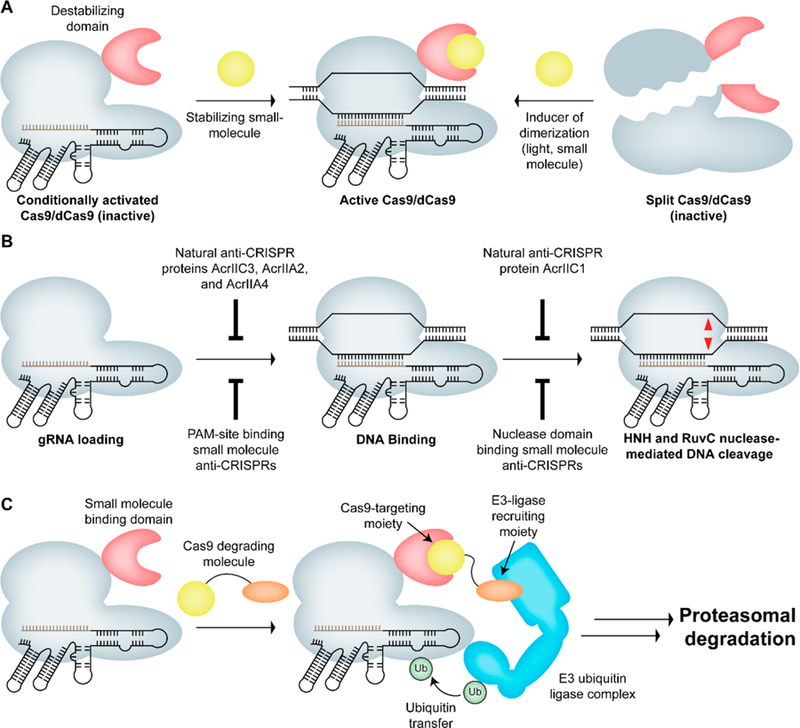Figure 2.

Strategies for conditional control of Cas9 activity. (A) Cas9 can be inactivated by fusing a small molecule or light-responsive domain, or it can be split into N- and C-terminal fragments that can be reconstituted in response to a small molecule or light, leading to the formation of active Cas9. (B) Steps involved in Cas9-mediated strand DNA cleavage. Any of the steps shown above can be inhibited by a protein or small-molecule inhibitor leading to loss of Cas9 activity. (C) Strategy for Cas9 degradation using a heterobifunctional small molecule such that one end of the molecule binds to the small-molecule binding domain fused to Cas9 and the other end binds to CRBN, resulting in ubiquitination and proteasomal degradation of Cas9.
